需要订阅 JoVE 才能查看此. 登录或开始免费试用。
Method Article
吡虫啉在小麦中吸收、易位和分布的测定
摘要
这里介绍的是使用液相色谱-串联质谱(LC-MS-MS)测定水培条件下小麦中吡虫啉的吸收,易位和分布的方案。结果表明:吡虫啉可被小麦吸收,在小麦根系和叶片均检测到吡虫啉。
摘要
新烟碱类杀虫剂是一类杀虫剂,因其新颖的作用方式、高杀虫活性和强大的根系吸收而被广泛使用。吡虫啉是全球使用最广泛的杀虫剂,是具有代表性的第一代新烟碱类杀虫剂,用于农作物、蔬菜和果树的害虫防治。随着吡虫啉的广泛应用,其在作物中的残留物引起了越来越多的关注。本研究将15株小麦幼苗置于含有0.5 mg/L或5 mg/L吡虫啉的培养基中水生培养。在水培1 d、2 d和3 d后测定小麦根叶中吡虫啉的含量,探讨吡虫啉在小麦中的迁移和分布。结果表明:小麦植株根叶均检出吡虫啉,根系吡虫啉含量高于叶片;此外,小麦中吡虫啉浓度随着暴露时间的增加而增加。暴露3 d后,0.5 mg/L处理组小麦根叶分别含有4.55 mg/kg±1.45 mg/kg和1.30 mg/kg±0.08 mg/kg吡虫啉,5 mg/L处理组根叶分别含有42.5 mg/kg±0.62 mg/kg和8.71 mg/kg±0.14 mg/kg吡虫啉, 分别。本研究结果有助于更好地了解作物中的农药残留情况,为农药环境风险评估提供数据参考。
引言
在当今的农学中,使用杀虫剂对于提高作物产量至关重要。新烟碱类杀虫剂通过控制昆虫神经系统中的烟碱乙酰胆碱受体来改变膜电位平衡,从而抑制昆虫中枢神经系统的正常传导,导致昆虫瘫痪和死亡1。与传统杀虫剂相比,新烟碱类具有作用方式新颖、杀虫活性高、根系吸收强等优点,使其在农药市场上大获成功2,3。据报道,2014年新烟碱类药物的销量占世界农药市场的27%。2005—2010年,新烟碱类的年均增长率为11.4%,其中约7%在中国注册4,5,6。2016年底至2017年上半年,我国农药销量在回落后开始反弹,农药价格持续上涨,其中新烟碱类杀虫剂价格呈现大幅涨幅7。到目前为止,已经开发了三代新烟碱类杀虫剂,每代含有吡啶氯、噻唑基和四氢呋喃基团的尼古丁,分别为8.
吡虫啉是第一代新烟碱类杀虫剂,分子式为C9H10ClN5O2,为无色结晶。吡虫啉主要用于防治害虫,如蚜虫、飞虱、黄粉虫和蓟马9 ,可应用于水稻、小麦、玉米、棉花等作物和马铃薯等蔬菜以及果树。由于农药的长期、大量、持续施用,既有益虫,也有害虫的天敌迅速减少,一些农业害虫对农药产生抗药性,造成农药持续施用量不断增加的恶性循环10.此外,农药的广泛使用导致土壤质量恶化,农产品中农药残留持久性等生态问题,不仅对农业生态环境造成重大破坏11 ,而且对人类健康构成严重威胁12。农药喷洒严重影响土壤微生物和土壤动物的生长和质量13.农药的不合理或过量使用,给水土环境、动植物甚至人类生命造成了重大安全隐患14。近年来,随着农药的广泛应用,农作物农药残留超标问题愈发严重。当吡虫啉用于提高蔬菜产量时,吡虫啉在蔬菜中的吸收率随着吡虫啉的量和残留量的增加而增加15。作为主要粮食作物,小麦的生产和安全都至关重要。因此,小麦用农药的残留和分配政策需要明确。
近年来,已经开发出许多从水、土壤和植物中提取吡虫啉残留物的方法。QuEChERS方法(快速、简单、廉价、有效、坚固、安全)是一种结合了固相微萃取技术和分散固相萃取技术的新方法,涉及使用乙腈作为萃取溶剂,分别使用NaCl和无水MgSO4去除样品中的混合杂质和水16.QuEChERS方法需要最少的玻璃器皿,并且具有简单的实验步骤,使其成为最受欢迎的农药提取方法之一17。对于吡虫啉的检测,液相色谱(LC)的检测限低至1×10−9 g18,气相色谱(GC)的检测限低至1 × 10−11 g 19。由于其高分辨率和灵敏度,LC-MS和GC-MS显示出更低的吡虫啉检测限,为1×10-13至1×10-14g 20,21;因此,这些技术非常适合分析痕量吡虫啉残留物。
本研究以吡虫啉为目标污染物,以小麦为试验作物,研究吡虫啉残留在小麦中的分布情况。该协议详细介绍了一种通过探索吡虫啉在水培条件下生长的小麦植物不同部分的吸收和储存来全面分析小麦中农药吡虫啉富集和转移的方法。本研究旨在为小麦农药残留风险评估提供理论依据,指导农业生产活动中合理施用农药,减少农药残留,提高作物生产安全性。
研究方案
1. 小麦种子的发芽
- 选择1,000粒小麦种子(Jimai 20),具有完整的颗粒,完整的胚胎和均匀的大小(长度:6毫米±0.5毫米)。
- 将 333.3 mL 30% H 2 O 2 溶液转移到 1 L 容量瓶中,并用去离子水稀释以制备 1 L 10% H 2 O2溶液。将小麦种子浸入10%H2O2溶液中15分钟以消毒种子表面(图1)。
- 用流动的无菌水冲洗小麦种子5次,每次10秒。
- 均匀地散布小麦种子,胚胎指向装有潮湿无菌滤纸的玻璃培养皿中(图2)。将培养皿置于30°C和80%相对湿度的人工气候培养箱中。将小麦种子在黑暗中培养3天,直到它们发芽并生根。
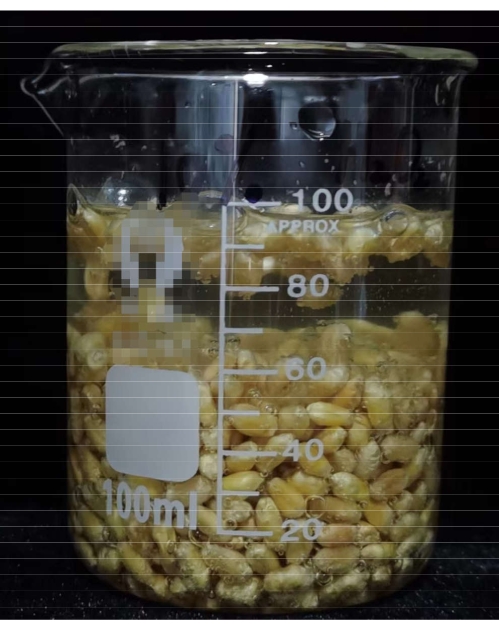
图1:小麦种子的消毒。 将小麦种子浸泡在10%H2O2 溶液(烧杯中)中15分钟以消毒种子表面。 请点击此处查看此图的大图。
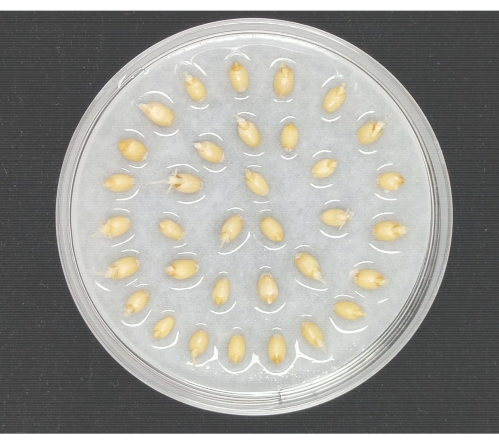
图2:小麦种子发芽。 将小麦种子均匀地散布在含有潮湿无菌滤纸的玻璃培养皿中。将培养皿置于人工气候培养箱中以使小麦种子发芽。 请点击此处查看此图的大图。
二、小麦苗的栽培
- 将 551 mg Hoagland 的基础盐混合物溶解在 1 L 去离子水中,制备 1/2 Hoagland 营养液(含有 0.75 mmol/L K2SO 4、0.1 mmol/L KCl、0.6 mmol/L MgSO 4、4.0 × 10−2 mmol/L FeEDTA、1.0 × 10−3 mmol/L H 3 BO3、1.0 × 10−3 mmol/L MnSO 4, 1.0 × 10−3 毫摩尔/升 氧化锌4、1.0 × 10−4 毫摩尔/升铜酸4 和 5.0 × 10−6 毫摩尔/升Na 2 MoO4)。
- 小麦种子(步骤1.4)发芽后,将15棵小麦幼苗放入含有100mL水培1/2 Hoagland营养液的水培设备(见 材料表)中(图3)。将整个水培装置置于人工气候培养箱(见 材料表)中,并在25°C和80%相对湿度下以16小时光照/ 8小时黑暗光周期孵育7天。
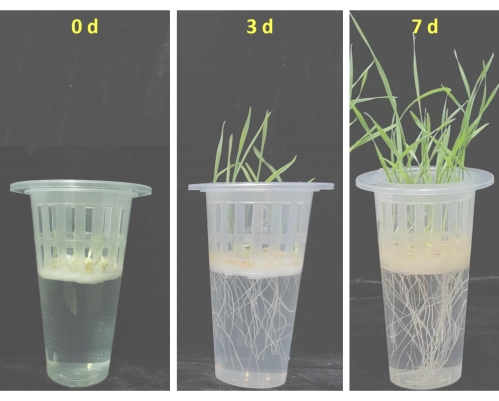
图3:小麦幼苗的水培栽培。 小麦幼苗在100 mL 1/2 Hoagland营养液中水培0 d、3 d和7 d。 请点击此处查看此图的大图。
3.将小麦植株暴露于吡虫啉溶液中的实验
- 经过7 d的水培期后,将小麦植株移植到含有0.5 mg/L或5 mg/L吡虫啉的1/2 Hoagland营养液中进行吡虫啉暴露实验。在每个水培装置中种植15株小麦植物。为每个吡虫啉浓度组设置15个水培装置,以确保在取样过程中采集足够的样品。
- 将整个水培设备置于人工气候培养箱中,在25°C和80%相对湿度下以16小时光照/ 8小时黑暗光周期放置3天。
- 在整个暴露期间,每天收集小麦根(每株小麦0.2克)和叶子(每株小麦0.5克)。将来自每五个水培装置的小麦样品整合为平行组,并确定样品的吡虫啉含量。
4.从小麦中提取吡虫啉的程序
- 从小麦根系中提取吡虫啉
- 为避免实验错误,每次用流动的无菌水洗涤小麦根部4倍,以去除吸附在根表面上的任何吡虫啉。
- 用剪刀将小麦根切成约1厘米的碎片(图4)。称取 10.00 g 切碎的小麦根,放入 50 mL 离心管中。
- 向离心管中加入10mL乙腈,并在涡旋器上涡旋管1分钟。然后,向离心管中加入4g无水MgSO4 和1.5gNaCl,并立即涡旋管30秒。将试管以6,000× g离心5分钟。
- 用一次性注射器吸出上清液并将其通过注射器过滤器(0.22μm孔径)以获得样品。
- 从小麦叶片中提取吡虫啉(图5)
- 用剪刀将新鲜小麦叶切成约1厘米的碎片(图4)。称取 10.00 g 切碎的小麦叶,放入 50 mL 离心管中。
- 向离心管中加入10mL乙腈,并在涡旋器上涡旋管1分钟。
- 向离心管中加入4g无水MgSO4 和1.5gNaCl,并立即涡旋管30秒。
- 将试管以6,000× g离心5分钟。
- 离心后,将 2 mL 上清液加入含有 50 mg 石墨化炭黑 (GCB) 和 150 mg 无水 MgSO4 的 5 mL 离心管中(以去除样品中的色素和水分),并涡旋离心管 30 秒(图 6)。将试管以6,000× g离心5分钟。
- 用一次性注射器吸出上清液并将其通过注射器过滤器(0.22μm孔径)以获得样品。
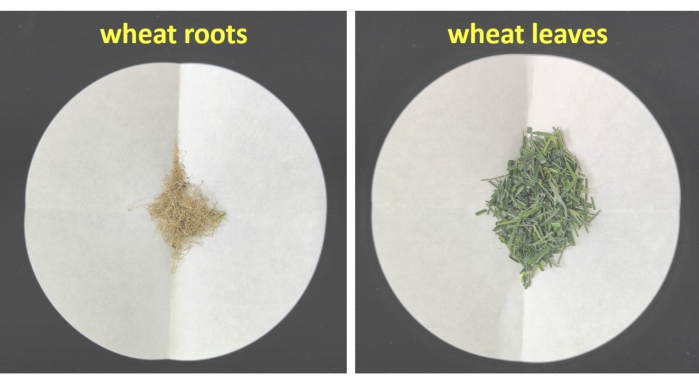
图4:切碎的小麦根和叶。 新鲜小麦的根和叶用剪刀切成约1厘米的碎片。 请点击此处查看此图的大图。
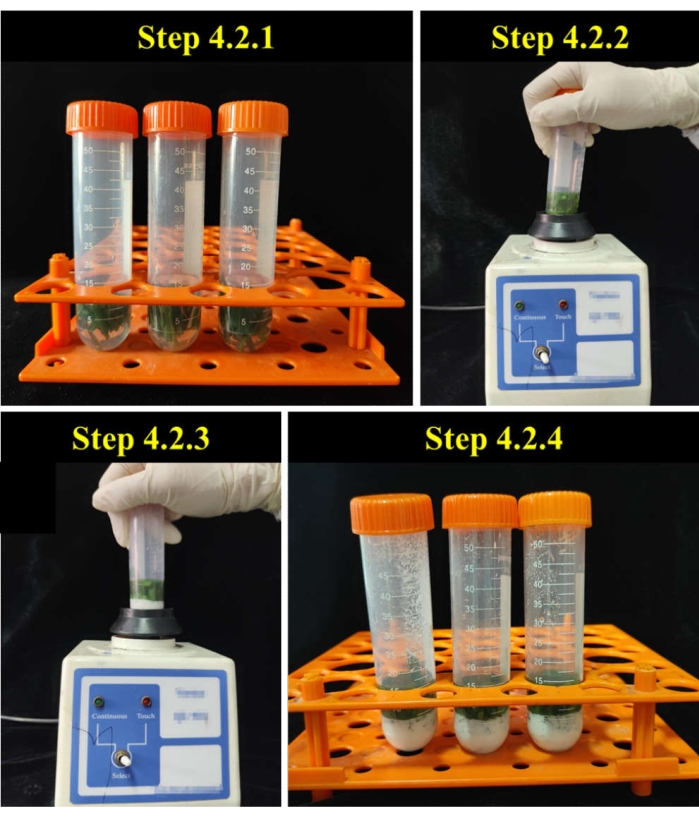
图5:小麦叶片中吡虫啉的提取。 使用QuEChERS方法提取样品中的吡虫啉(协议的步骤4.2.1-4.2.4)。 请点击此处查看此图的大图。
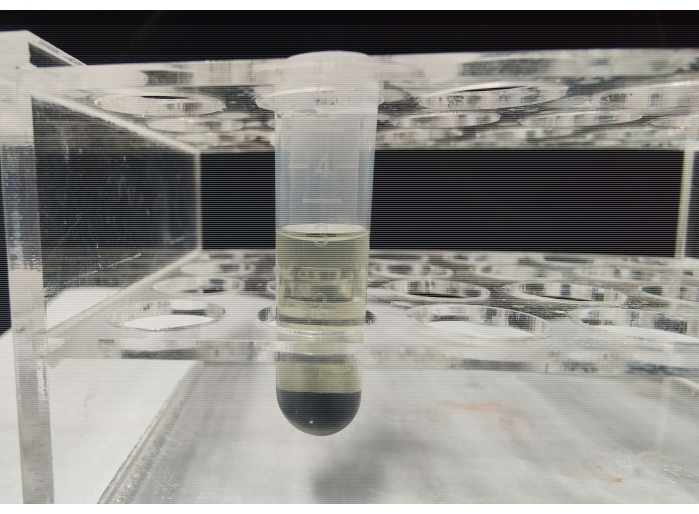
图6:小麦叶片中吡虫啉的纯化。 去污剂为50毫克GCB+ 150毫克MgSO4。 请点击此处查看此图的大图。
5.吡虫啉的定量
- 使用液相色谱-串联质谱(LC-MS-MS)定量样品中的吡虫啉,基于从0.2-250μg/ L吡虫啉浓度获得的标准曲线(y = 696.61x + 56.411,R = 1)。(图7)。质谱仪配备了C18 色谱柱(100 mm x 2.1 mm,3 μm)和电喷雾电离源(ESI+)。洗脱程序和离子源参数如 表1所示。
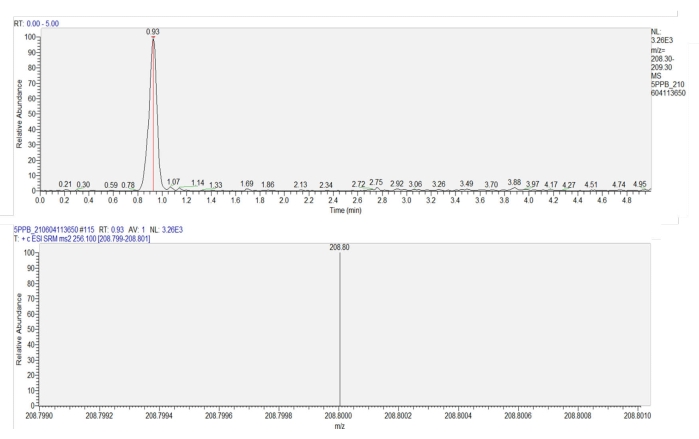
图7:小麦叶片中吡虫啉的色谱图和质谱图。 上图显示了吡虫啉的色谱图(保留时间= 0.93分钟)。下图显示了吡虫啉在0.93 min时的质谱图,显示了吡虫啉生产的反应强度(m / z = 208.8)。 请点击此处查看此图的大图。
| 柱温 | 40 °C |
| 溶剂A | 99.9% 水/0.1% 甲酸 (V/V) |
| 溶剂B | 乙 腈 |
| 洗脱程序 | 0–0.5 分钟,A = 20% |
| 0.5–2 分钟,A = 20%–50% | |
| 2–3 分钟,A = 50% | |
| 3–3.1 分钟,A = 50%–20% | |
| 3.1–5 分钟,A=20% | |
| 流速(毫升/分钟) | 0.3 |
| 进样体积(μL) | 5 |
| 毛细管温度(°C) | 330 |
| 汽化器温度(°C) | 350 |
| 护套气体流量(Arb) | 40 |
| 辅助气体流量(套利) | 20 |
| 喷雾电压(V) | 3900 |
| 碰撞气体压力(mTorr) | 1.5 |
| 母离子 | 256.1 |
| 乘积离子/碰撞能量 (eV) | 208.8/16 |
表1:液相色谱-质谱法的洗脱程序和离子源参数。
结果
吡虫啉的检测仪器限(LOD)为5.76 × 10−14 g,该方法对小麦根或叶片吡虫啉的检测限为0.01 μg/kg;未观察到基质效应。吡虫啉在小麦中的回收率见 表2。吡虫啉浓度为0.5 mg/L和5 mg/L的小麦根系吡虫啉回收率分别为94.0%—97.6%和98.8%—99.2%;变异系数分别为1.92%和0.20%。吡虫啉浓度为0.5 mg/L和5 mg/L的小麦叶片吡虫啉回收率分别为88.2%-91.4%和92.5%-93.4%;变异系数分别为1.85%和0.53%。
讨论
近年来,农药吡虫啉残留的预处理和检测方法经常被报道。Badawy等人23使用高效液相色谱法测定了在温室条件下生长的番茄果实中吡虫啉的含量,并报告吡虫啉的线性良好,范围为0.0125-0.15μg/mL。Zhai等24使用LC-MS-MS研究了中国细香葱中吡虫啉的残留。本研究采用QuEChERS方法从小麦根叶中提取吡虫啉。作为一种快速有效的方法,QuEChERS方法非常适合并广泛用于从土壤...
披露声明
提交人声明他们没有利益冲突。所有作者都已阅读并批准了该稿件。这项工作以前没有发表过,也没有被任何其他同行评审的期刊考虑过。
致谢
这项工作得到了国家自然科学基金(第42277039号)的支持。
材料
| Name | Company | Catalog Number | Comments |
| Acetonitrile | Sigma-Aldrich (Shanghai) Trading Co. Ltd. | 01-06-1995 | Suitable for HPLC, gradient grade, >99.9% |
| Analytical balance | Sartorius Lab Instruments Co.Ltd. | GL124-1SCN | |
| Artificial climate incubator | Shanghai Badian Instrument Equipment Co. Ltd. | HK320 | |
| Centrifuge | Eppendorf China Co. Ltd. | Centrifuge5804 | |
| Disposable syringe | Sigma-Aldrich (Shanghai) Trading Co. Ltd. | Z116866 | Capacity 5 mL, graduated 0.2 mL, non-sterile |
| Formic acid | Sigma-Aldrich (Shanghai) Trading Co. Ltd. | Y0001970 | European pharmacopoeia reference standard |
| Graphitized carbon black (GCB) | Sigma-Aldrich (Shanghai) Trading Co. Ltd. | V900058 | 45 μm |
| H2O2 | Sigma-Aldrich (Shanghai) Trading Co.Ltd. | 31642 | 30% (w/w) |
| Hoagland’s Basal Salt Mixture | Shanghai Yu Bo Biotech Co. Ltd. | NS1011 | Anhydrous, reagent grade |
| Hydroponic equipment | Jiangsu Rongcheng Agricultural Science and Technology Development Co.Ltd. | SDZ04BD | |
| Hypersil BDS C18 column | Thermo Fisher Scientific (China) Co. Ltd. | 28103-102130 | |
| Imidacloprid | Sigma-Aldrich (Shanghai) Trading Co. Ltd. | Y0002028 | European pharmacopoeia reference standard |
| MgSO4 | Sigma-Aldrich (Shanghai) Trading Co. Ltd. | 208094 | Anhydrous, reagent grade, >97% |
| NaCl | Sigma-Aldrich (Shanghai) Trading Co.Ltd. | S9888 | Reagent grade, 99% |
| pH meter | Shanghai Thunder Magnetic Instrument Factory | PHSJ-3F | |
| Phytotron box | Harbin Donglian Electronic Technology Co. Ltd. | HPG-280B | |
| Pipettes | Eppendorf China Co. Ltd. | Research plus | |
| Syringe filter | Sigma-Aldrich (Shanghai) Trading Co.Ltd. | SLGV033N | Nylon, 0.22 µm pore size, 33 mm, non-sterile |
| Ultra performance liquid chromatography tandem triple quadrupole mass spectrometry | Thermo Fisher Scientific (China) Co. Ltd. | UltiMate 3000 | |
| TSQ Quantum Access MAX | |||
| Vortex mixer | Shanghai Yetuo Technology Co. Ltd. | Vortex-2 | |
| Wheat seed | LuKe seed industry | Jimai 20 |
参考文献
- Lin, P. C., Lin, H. J., Liao, Y. Y., Guo, H. R., Chen, K. T. Acute poisoning with neonicotinoid insecticides: A case report and literature review. Basic & Clinical Pharmacology & Toxicology. 112 (4), 282-286 (2013).
- North, J. H., et al. Value of neonicotinoid insecticide seed treatments in Mid-South corn (Zea mays) production systems. Journal of Economic Entomology. 111 (1), 187-192 (2018).
- Simon-Delso, N., et al. Systemic insecticides (neonicotinoids and fipronil): Trends, uses, mode of action and metabolites. Environmental Science and Pollution Research. 22 (1), 5-34 (2015).
- Bass, C., Denholm, I., Williamson, M. S., Nauen, R. The global status of insect resistance to neonicotinoid insecticides. Pesticide Biochemistry and Physiology. 121, 78-87 (2015).
- Craddock, H. A., Huang, D., Turner, P. C., Quiros-Alcala, L., Payne-Sturges, D. C. Trends in neonicotinoid pesticide residues in food and water in the United States, 1999-2015. Environmental Health. 18 (1), 7 (2019).
- Shao, X. S., Liu, Z. W., Xu, X. Y., Li, Z., Qian, X. H. Overall status of neonicotinoid insecticides in China: Production, application and innovation. Journal of Pesticide Science. 38 (1-2), 1-9 (2013).
- Zhao, Y., et al. Urinary neonicotinoid insecticides in children from South China: Concentrations, profiles and influencing factors. Chemosphere. 291, 132937 (2022).
- Kurwadkar, S., Evans, A. Neonicotinoids: Systemic insecticides and systematic failure. Bulletin of Environmental Contamination and Toxicology. 97 (6), 745-748 (2016).
- Sadaria, A. M., et al. Passage of fiproles and imidacloprid from urban pest control uses through wastewater treatment plants in northern California, USA. Environmental Toxicology and Chemistry. 36 (6), 1473-1482 (2017).
- Damalas, C. A., Eleftherohorinos, I. G. Pesticide exposure, safety issues, and risk assessment indicators. International Journal of Environmental Research and Public Health. 8 (5), 1402-1419 (2011).
- Hayes, T. B., et al. Demasculinization and feminization of male gonads by atrazine: Consistent effects across vertebrate classes. Journal of Steroid Biochemistry and Molecular Biology. 127 (1-2), 64-73 (2011).
- Rani, L., et al. An extensive review on the consequences of chemical pesticides on human health and environment. Journal of Cleaner Production. 283, 124657 (2021).
- Xu, Y. Q., et al. Ecotoxicity evaluation of azoxystrobin on Eisenia fetida in different soils. Environmental Research. 194, 110705 (2021).
- Yavari, S., Malakahmad, A., Sapari, N. B. Biochar efficiency in pesticides sorption as a function of production variables-A review. Environmental Science and Pollution Research. 22 (18), 13824-13841 (2015).
- Delcour, I., Spanoghe, P., Uyttendaele, M. Literature review: Impact of climate change on pesticide use. Food Research International. 68, 7-15 (2015).
- Zhang, C. Y., et al. The application of the QuEChERS methodology in the determination of antibiotics in food: A review. TrAC-Trends in Analytical Chemistry. 118, 517-537 (2019).
- Wiilkowska, A., Biziuk, M. Determination of pesticide residues in food matrices using the QuEChERS methodology. Food Chemistry. 125 (3), 803-812 (2011).
- Ishii, Y., et al. HPLC determination of the new insecticide imidacloprid and its behavior in rice and cucumber. Journal of Agricultural and Food Chemistry. 42 (12), 2917-2921 (1994).
- Ko, A. Y., et al. Development of a simple extraction and oxidation procedure for the residue analysis of imidacloprid and its metabolites in lettuce using gas chromatography. Food Chemistry. 148, 402-409 (2014).
- Yuan, W. L., et al. Application of imidacloprid controlled-release granules to enhance the utilization rate and control wheat aphid on winter wheat. Journal of Integrative Agriculture. 19 (12), 3045-3053 (2020).
- Phugare, S. S., Kalyani, D. C., Gaikwad, Y. B., Jadhav, J. P. Microbial degradation of imidacloprid and toxicological analysis of its biodegradation metabolites in silkworm (Bombyx mori). Chemical Engineering Journal. 230, 27-35 (2013).
- Li, Y., et al. Uptake, translocation and accumulation of imidacloprid in six leafy vegetables at three growth stages. Ecotoxicology and Environmental Safety. 164, 690-695 (2018).
- Badawy, M. E. I., Ismail, A. M. E., Ibrahim, A. I. H. Quantitative analysis of acetamiprid and imidacloprid residues in tomato fruits under greenhouse conditions. Journal of Environmental Science and Health Part B-Pesticides Food Contaminants and Agricultural Wastes. 54 (11), 898-905 (2019).
- Zhai, R. Q., et al. Residue, dissipation pattern, and dietary risk assessment of imidacloprid in Chinese chives. Frontiers in Nutrition. 9, 846333 (2022).
- Aria, M. M., et al. Uptake and translocation monitoring of imidacloprid to chili and tomato plants by molecularly imprinting extraction - ion mobility spectrometry. Microchemical Journal. 144, 195-202 (2019).
- Chen, Y., et al. Translocation and metabolism of imidacloprid in cabbage: Application of C-14-labelling and LC-QTOF-MS. Chemosphere. 263, 127928 (2021).
- Wild, S., Jones, K. Organic chemicals entering agricultural soils in sewage sludges: Screening for their potential to transfer to crop plants and livestock. Science of the Total Environment. 119, 85-119 (1992).
- Gong, W. W., et al. Uptake and dissipation of metalaxyl-M, fludioxonil, cyantraniliprole and thiamethoxam in greenhouse chrysanthemum. Environmental Pollution. 257, 113499 (2020).
转载和许可
请求许可使用此 JoVE 文章的文本或图形
请求许可探索更多文章
This article has been published
Video Coming Soon
版权所属 © 2025 MyJoVE 公司版权所有,本公司不涉及任何医疗业务和医疗服务。